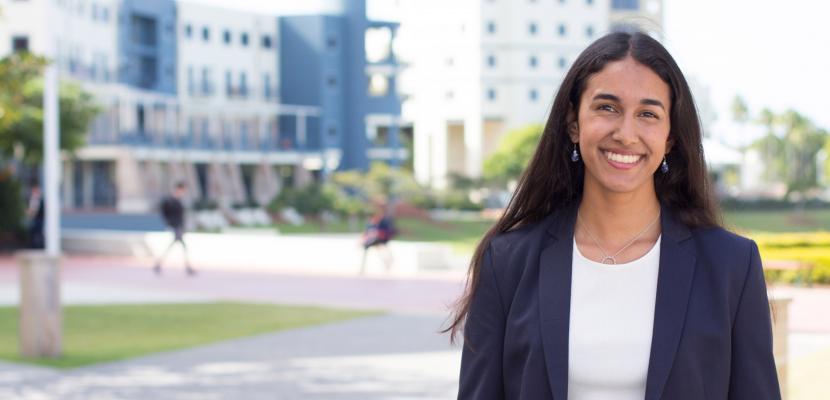
Nicole Mesquita-Mendes was born in Kenya, grew up in Toowoomba, and has family heritage in Goa, India.
At Downlands College she considered a career in medicine or architecture but it was at Bond University that architecture won out.
In early August Ms Mesquita-Mendes received the Soheil Abedian Medal for Excellence, awarded to the highest-achieving student in the Bachelor of Architectural Studies course.
This month she will return to the Gold Coast university after securing a coveted Abedian Foundation Master of Architecture Scholarship, and also undertake a Master of Project Management.
"In high school I was very mathematics and science-driven, but I also have a strong creative side," Ms Mesquita-Mendes said.
"In the end that's why I decided to go with architecture because it engaged with all the facets of my personality.
"I think travelling to visit my grandparents in India and seeing the different ways people inhabit spaces in different cultures was also a driving factor for me."
Ms Mesquita-Mendes said her arrival at Bond in 2018 was a ‘moment of great opportunity’
"It provided the chance for me to be independent and find out who I wanted to be in this world,” she said.
"Something that's always been important for me is helping people and creating a better world and a positive impact."
In the period between completing her bachelor's degree and beginning her master's, Ms Mesquita-Mendes has been working at architecture firm Hayball in Brisbane.
She said like many fields, architecture is being reshaped by COVID-19.
"The pandemic has definitely changed the way people live and interact with the world around them and that presents a lot of challenges, but also opportunities,” she said.
"People are spending more time at home and more time in their neighbourhood, and they're becoming more aware of what's wrong with those spaces and how they might improve them.
"That could be how houses can adapt to become workspaces, or how green space, natural light, ventilation, balconies or roof terraces could be considered in design."
Social distancing – which will be with us until a vaccine is developed – would also shape design, she said.
"Often within architecture we see urban sprawl as a problem and densification as a solution to that," Ms Mesquita-Mendes said.
"But when you've got to be 1.5m away from someone, having such high densities is a challenge, especially on public transport.
"There are real opportunities to reimagine how cities are designed and you can already see this happening in cities like Paris and Milan that are pedestrianising spaces and promoting use of bicycles to reduce the number of people on public transport."